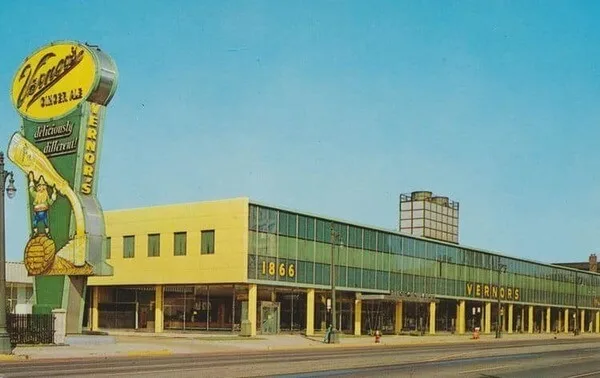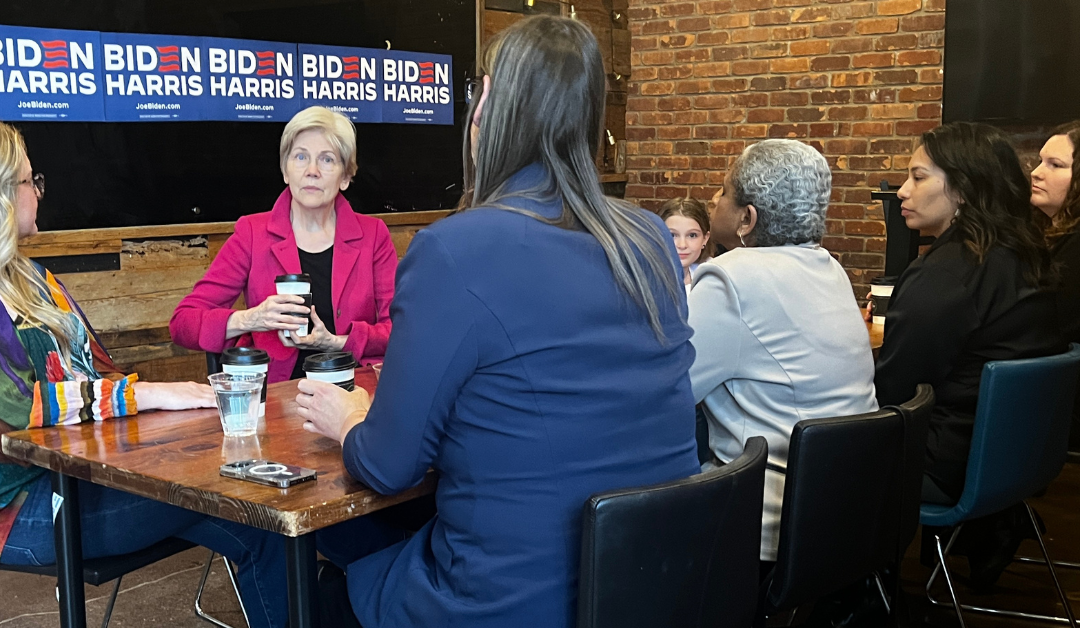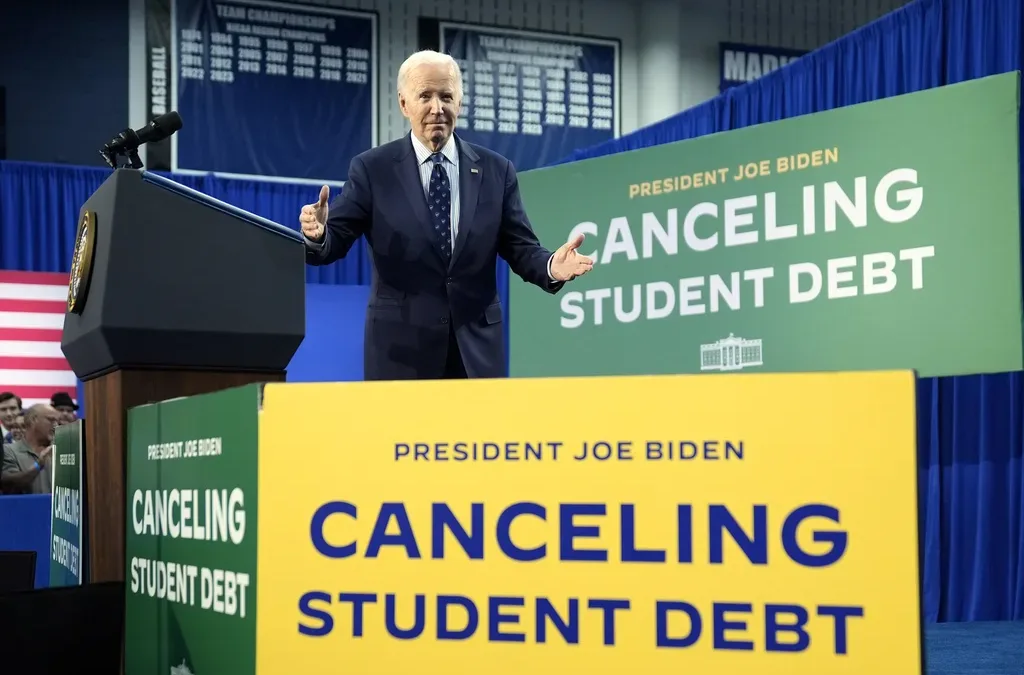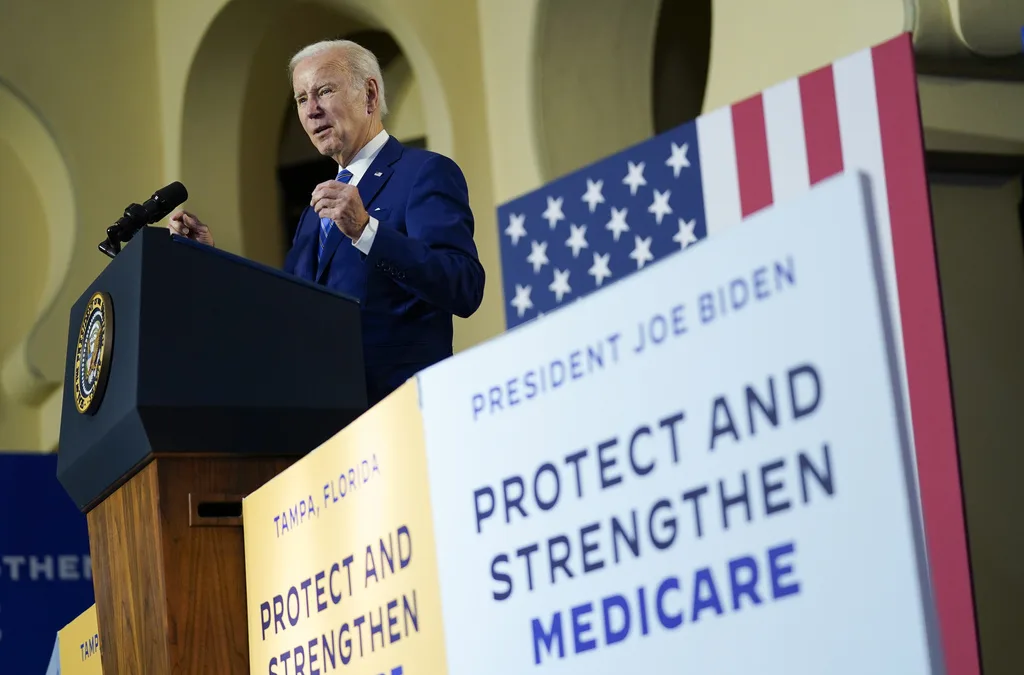
The "deliciously different" bottling plant at 4501 Woodward Ave., Detroit. Source: HistoricDetroit.org
As Michiganders, we put onions on hot dogs, olives on hamburgers, and snack on Polish donuts in February. But have you ever wondered why? In our Michigan Moments: Food series, we’re checking out the history behind iconic Michigan foods and beverages. This is the fifth article of the series. Look for a new one every Wednesday!
MICHIGAN — Though it may come as a surprise to you, food from the Midwest might be considered unusual by our coastal neighbors. Midwestern cooking often combines culinary traditions from our families’ immigrant backgrounds, locally grown and produced ingredients, and the foods of Indigenous tribes. And in Michigan especially, our home cookin’ includes provisions that were concocted, bottled, and packaged by mitten-state entrepreneurs. If you’re curious about the history of some of your favorite foods and beverages, read on to discover how Michigan history creates Michigan culture.
Vernors Ginger Ale and the Boston Cooler
If you’re like many Michiganders, when you get sick, you reach for the Vernors as a home remedy for just about every ailment. Perhaps, then, it shouldn’t come as a surprise that America’s oldest surviving ginger ale was the creation of Michigan’s first licensed pharmacist.

According to company legend, in 1862, Dr. James Vernor of Detroit was experimenting with a stomach tincture. He placed ginger and some other herbs in oak barrels to age in the hopes of creating a remedy for digestive ails. Vernor was drafted into the Civil War, where he served as a second lieutenant in the 4th Michigan Cavalry. To his surprise, when he returned, he discovered that aging his herbal concoction had made it “deliciously different,” which then became the drink’s motto. Vernors was reportedly first sold as Vernor’s Ginger Ale between 1866 and 1880.
Initially, Vernors was only available at soda fountains — some of which still exist today, like at the Halo Burger in Flint. In 1896, Vernor closed his pharmacy on Woodward Avenue and opened a bottling plant on the same street, in favor of mass production of Vernors. By 1915, operations expanded to include a bottling company.
Vernor died in 1927, by the way, but not before serving on the Detroit City Council for 25 years.
Around the same time Vernors was getting off the ground, another drink also entered the American cultural consciousness: the Boston Cooler. In the late 1800s, it started as a cocktail of rum, lime, and soda water in Massachusetts. As it made its way across soda fountains, the Boston Cooler transformed into sarsaparilla, a sassafras soft drink poured over vanilla ice cream. Other variations also emerged, like the Philadelphia Cooler, which used root beer, and a Maine Cooler that incorporated another local soda, Moxie. One variation included a scoop of ice cream inside a halved melon.
Here’s a look back at (and recipe for) that melon cooler!
But it was the Detroit version that really caught on nationwide.
Though it’s unlikely the Boston Cooler’s name came from Detroit’s Boston Boulevard or the Boston Edison district, the Boston Cooler still became decidedly Detroit. According to legend, Fred Sanders (of Sander’s hot fudge fame) invented the modern iteration of the Boston Cooler.

Sanders introduced the ice cream soda to Detroit when he opened a candy store there in 1875. He started using Vernors for his drinks in the early 1900s, and it was an immediate hit. Sander’s Boston Cooler likely looked very similar to how it’s created today — three parts vanilla ice cream with one part Vernors, either blended or poured depending on preference. However, die-hard fans of the Boston Cooler claim the ice cream must come from Stroh’s, another Detroit brand.

In case you’re wondering, Vernors originally had an apostrophe in the name, but dropped it in 1959. They also copyrighted the term “Boston Cooler” in 1967. Both drinks can still be found at restaurants and ice cream stands across the Midwest.
Politics

‘You are not safe’: Elizabeth Warren warns Michigan women ahead of presidential election
Abortion is protected under the state Constitution in Michigan. But Republican-led efforts to enact a nationwide abortion ban could still jeopardize...

Biden cancels student loan debt for 8,750 more Michiganders
The Biden administration on Friday announced its cancellation of an additional $7.4 billion in student debt for 277,000 borrowers, including 8,750...

The Republican war on Medicare raises the stakes in 2024
Nearly 2.2 million Michiganders rely on Medicare benefits—benefits they spent decades paying into, with the promise that the program would be there...
Local News

12 ways to celebrate 420 in Michigan in 2024
Michiganders love weed—and when it comes to celebrating the biggest stoner holiday of the year, they don’t hold back. MICHIGAN—With more than $3...

You can visit these 1,000-year-old Native American carvings in Michigan’s Thumb
Along a backroad just south of Bad Axe, a small dirt parking lot and unassuming sign are the only hints of something bigger—and deeply significant...





